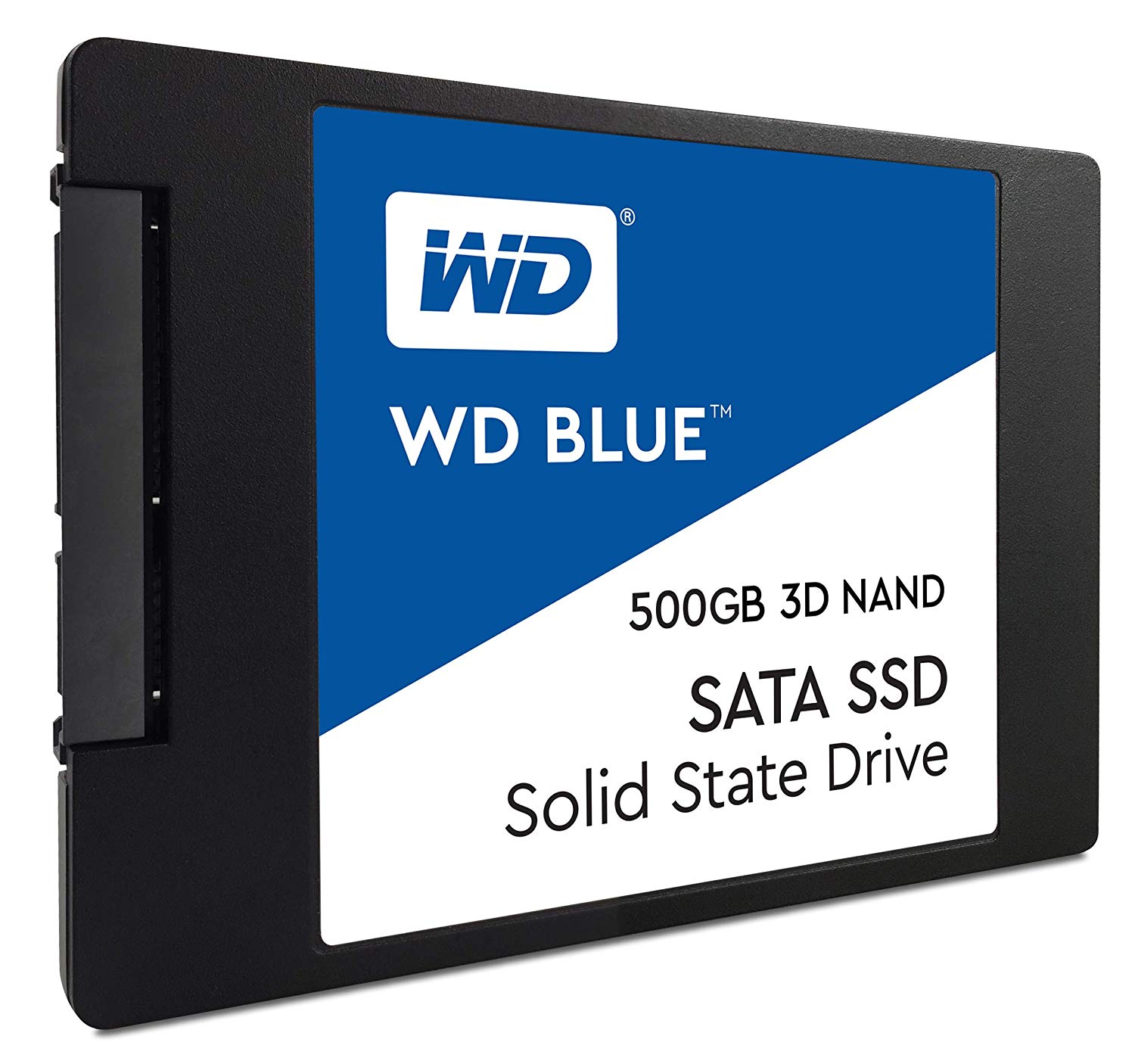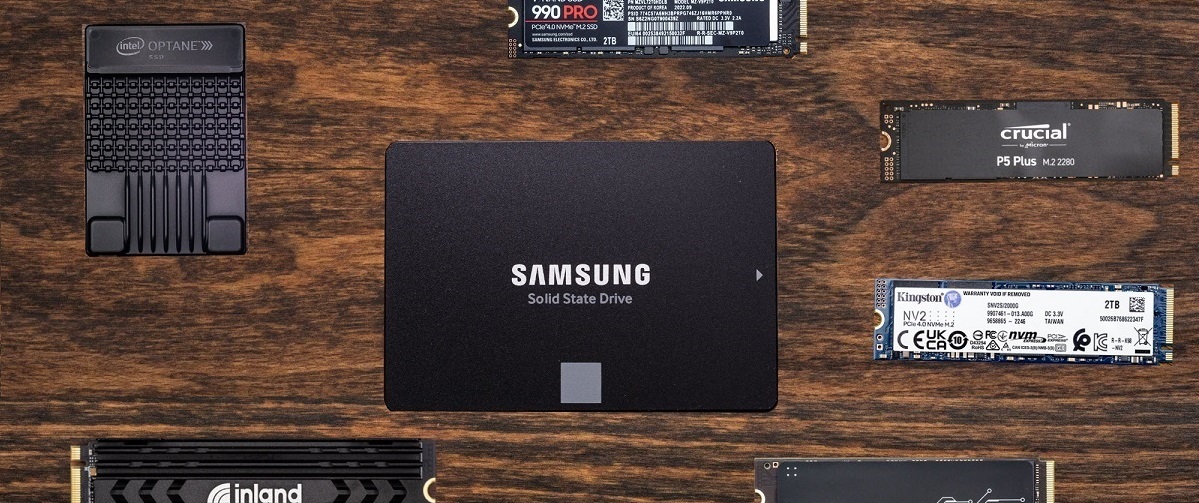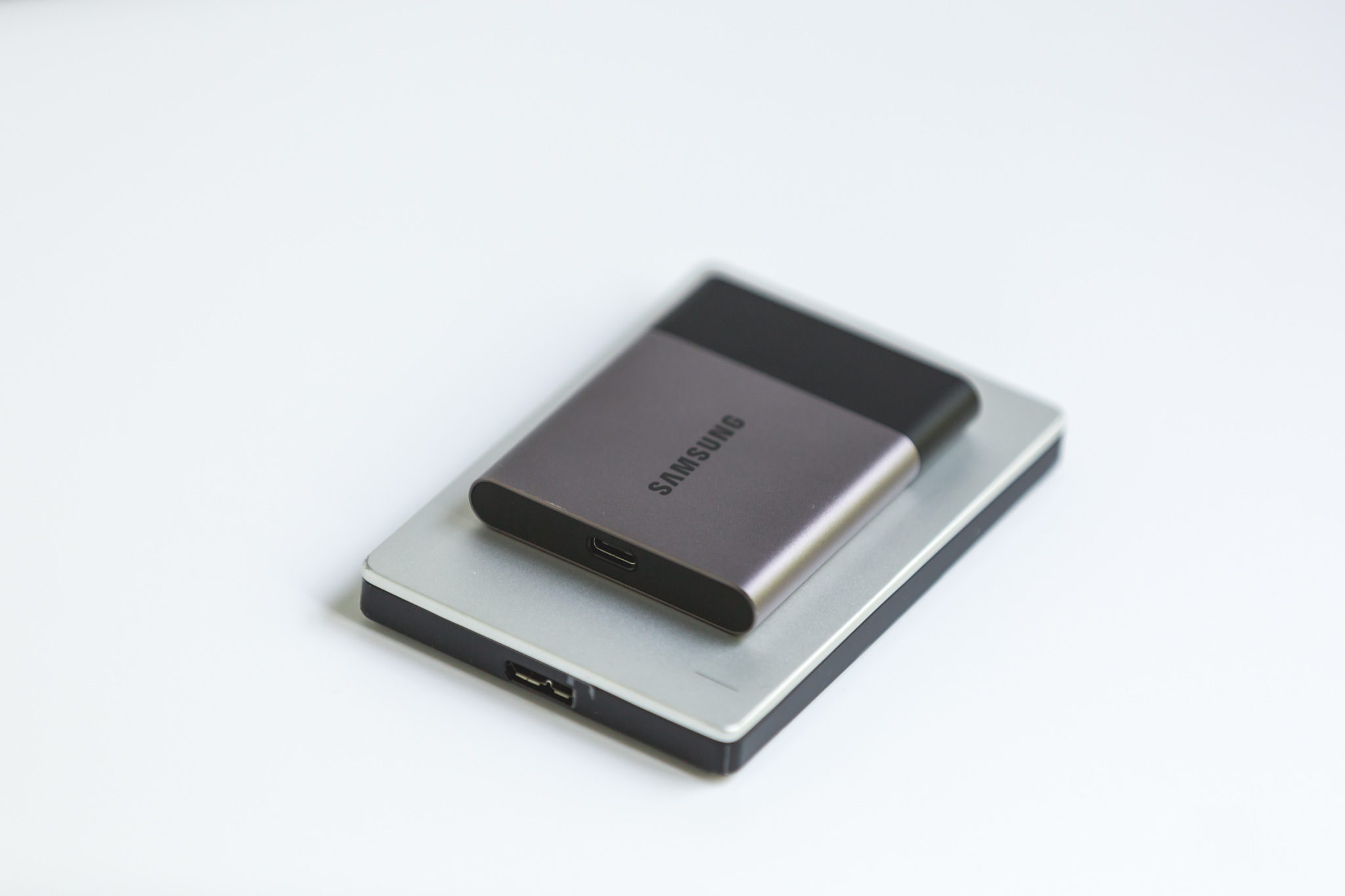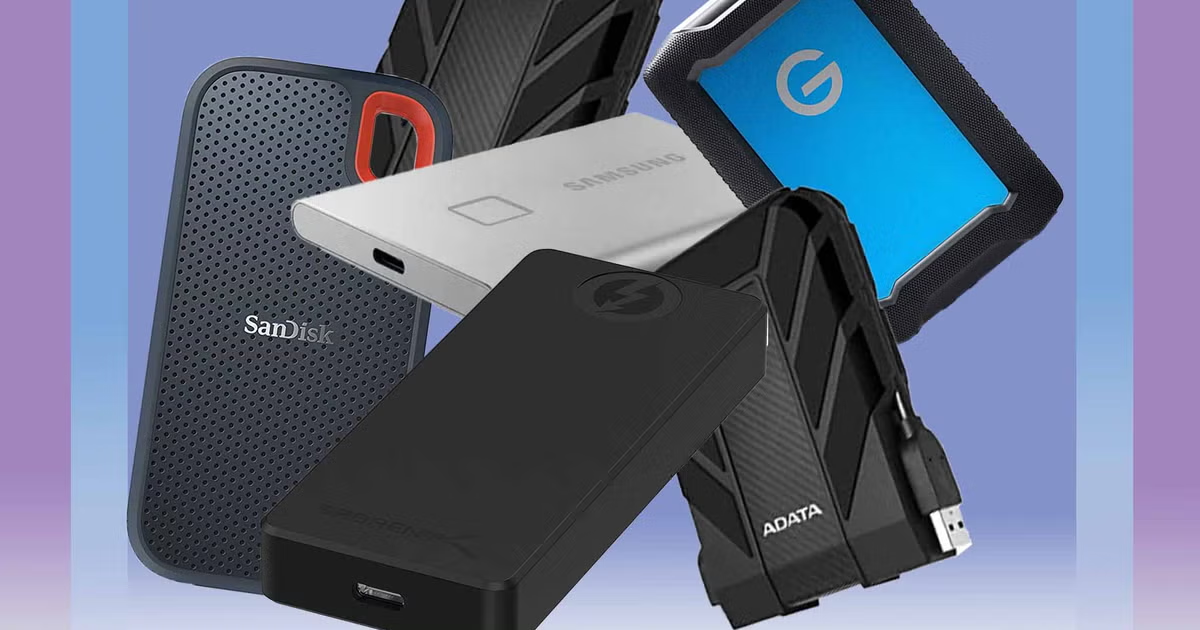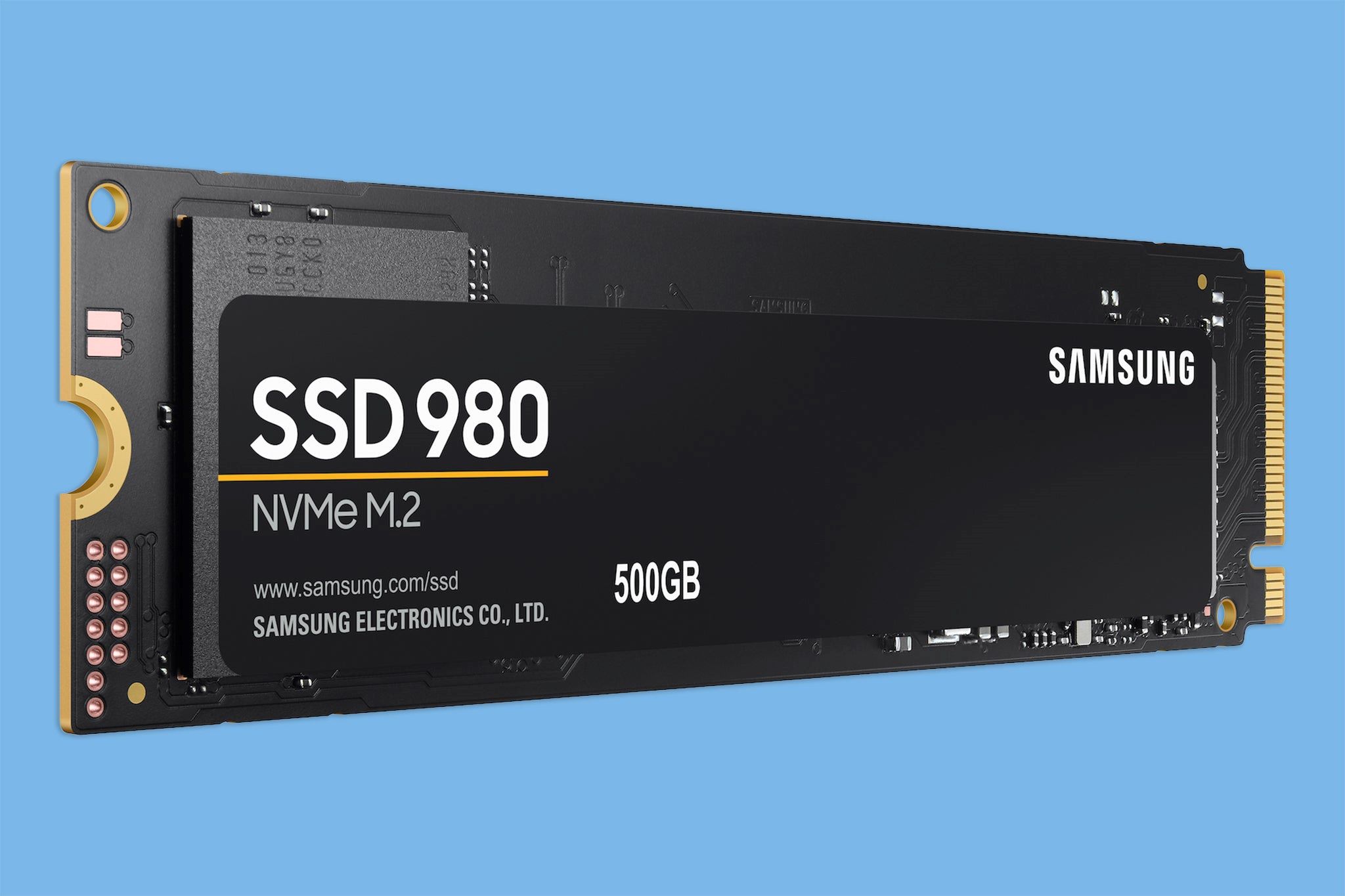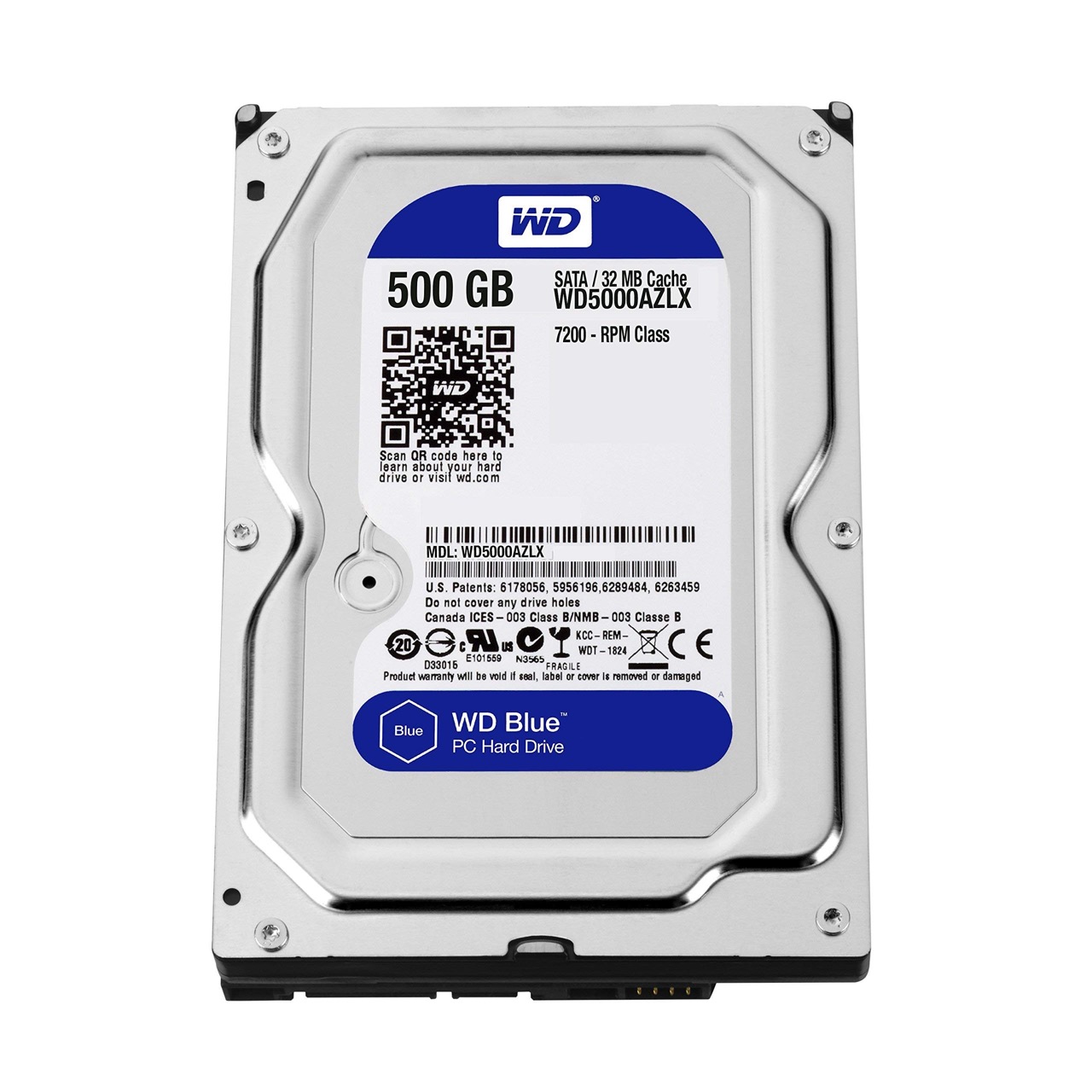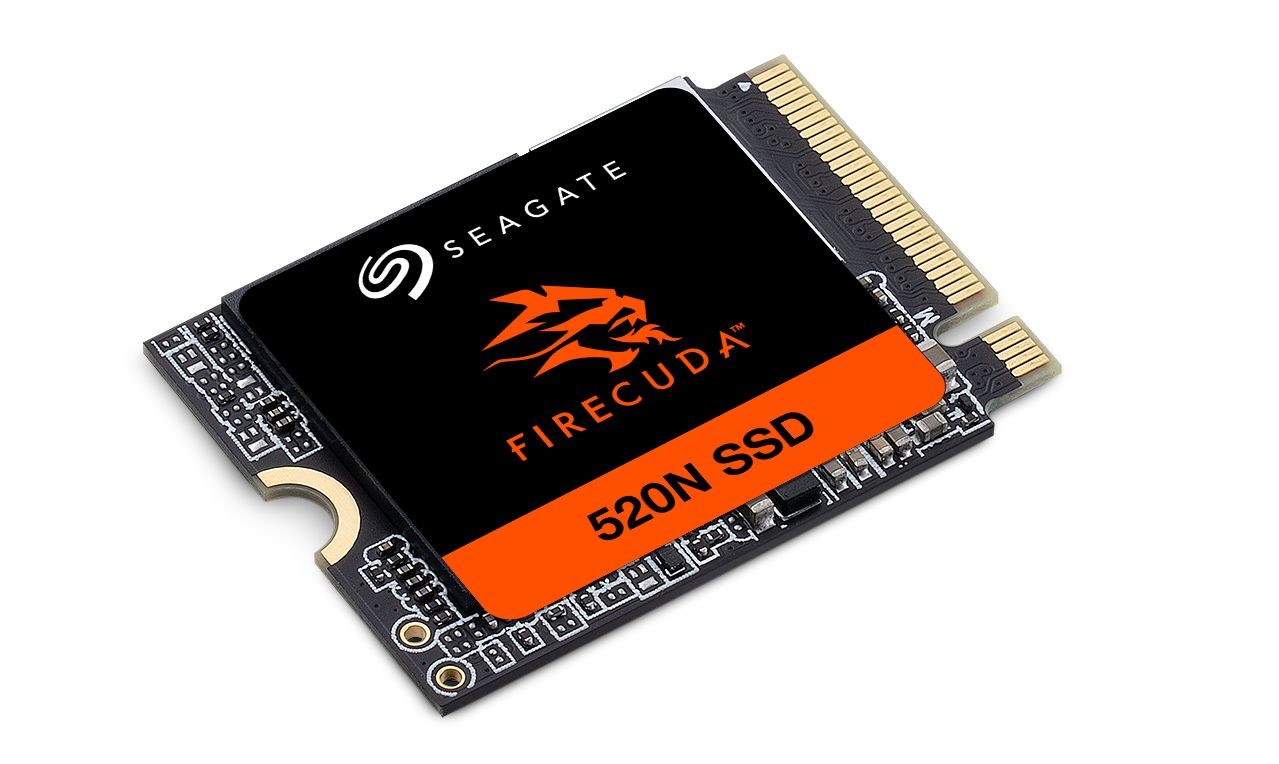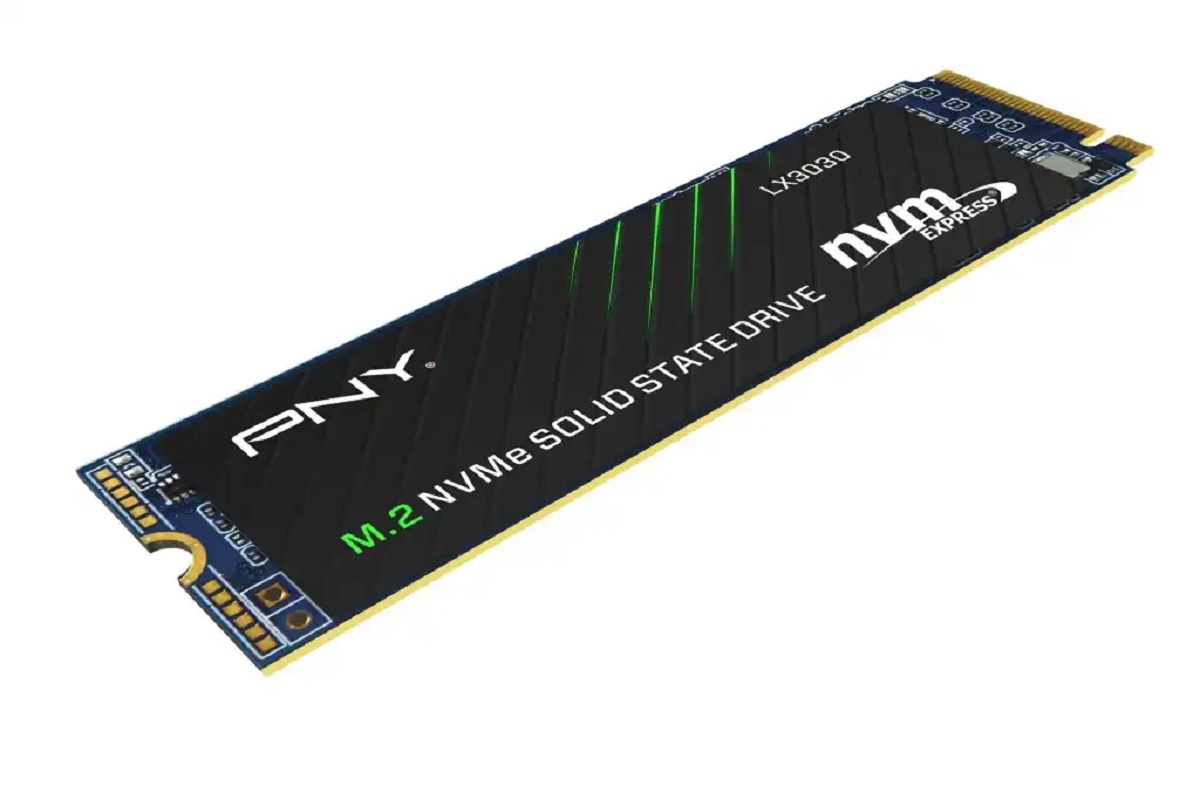Introduction
Welcome to the world of solid state drives (SSDs), where speed and performance reign supreme. The advancements in technology have paved the way for faster and more reliable storage options, and a 500GB solid state drive is the perfect example. Whether you’re a tech enthusiast, a gamer, or simply looking to upgrade your computer’s storage capabilities, a 500GB SSD can offer a significant boost in both speed and capacity.
But what exactly is a 500GB solid state drive? In simplest terms, it is a storage device that uses flash memory to store data, as opposed to traditional hard disk drives (HDDs) that use spinning disks. The solid state nature of the drive eliminates moving parts, resulting in faster access times, lower power consumption, and increased durability. With 500GB of storage space, you have ample room to store your files, documents, photos, videos, and even some large applications.
So, why should you consider investing in a 500GB SSD? The benefits are numerous. Firstly, speed is a major advantage. SSDs offer significantly faster read and write speeds compared to HDDs, allowing for quicker startup times, file transfers, and overall system responsiveness. This means you’ll spend less time waiting for your computer to load and more time getting things done.
Another benefit is durability. Traditional HDDs rely on spinning disks, making them more susceptible to damage from impacts or sudden movements. SSDs, on the other hand, have no moving parts, making them more resistant to physical shock and vibration. This can be especially important if you frequently travel with your device or use it in environments prone to jostling.
Additionally, SSDs are known for their noiseless operation. Since there are no moving parts involved, you won’t have to endure the constant hum and whir that is often associated with HDDs. This can result in a quieter and more pleasant user experience, especially for those who work in quiet environments or prefer a more peaceful computing experience.
Lastly, SSDs are more energy efficient. With no spinning disks to power, SSDs consume less energy than traditional HDDs, which can lead to longer battery life on laptops and reduced energy consumption in desktops. This is not only beneficial for the environment but can also save you money on electricity bills in the long run.
Now that we’ve explored the benefits of a 500GB solid state drive, let’s delve into how to choose the right one for your needs. From budget considerations to compatibility with your specific device, there are a few factors to keep in mind. Stay tuned for our next section, where we provide guidance on selecting the perfect 500GB SSD for you.
What is a 500GB Solid State Drive?
A 500GB solid state drive (SSD) is a type of storage device that offers 500 gigabytes (GB) of storage capacity. Unlike traditional hard disk drives (HDDs), which use spinning disks to store and retrieve data, SSDs utilize flash memory technology. This results in faster access times, improved performance, and enhanced durability.
SSDs are designed to replace HDDs in computers, laptops, gaming consoles, and other electronic devices. They provide a significant upgrade in terms of speed, reliability, and energy efficiency. The 500GB capacity allows ample storage space for operating systems, applications, files, documents, multimedia files, and more. Whether you’re a casual user or a professional requiring extensive storage, a 500GB SSD can cater to your needs.
Compared to HDDs, which rely on mechanical parts, SSDs have no moving components, making them more resistant to physical shock and damage. This durability makes SSDs ideal for portable devices that may experience frequent movement or jolting. Furthermore, their solid-state nature eliminates the noise associated with spinning disks, resulting in a quieter computing experience.
The key technology behind SSDs is flash memory, which is a type of non-volatile storage that retains data even when the power is turned off. In SSDs, the flash memory is composed of NAND chips, which consist of numerous memory cells that store data in the form of electrical charges. When data is accessed, the SSD reads or writes the charges, ensuring quick retrieval and modification.
One of the main advantages of SSDs, including 500GB models, is their superior speed. Compared to HDDs, which have mechanical limitations, SSDs offer significantly faster read and write speeds. This translates to faster boot times, shorter application loading times, and snappy file transfers. Tasks that used to take minutes on an HDD can be completed in seconds on an SSD.
Additionally, SSDs consume less power than HDDs, resulting in improved energy efficiency. Lower power consumption is not only beneficial for laptops and portable devices, extending battery life, but also reduces environmental impact and energy costs in desktop computers.
In summary, a 500GB solid state drive is a high-performance storage device that combines ample storage capacity with fast speeds, durability, low power consumption, and silent operation. It is a reliable and efficient choice for individuals and businesses seeking to optimize their storage capabilities and enhance overall system performance.
Benefits of a 500GB Solid State Drive
In the world of data storage, a 500GB solid state drive (SSD) offers numerous advantages over traditional hard disk drives (HDDs). With its generous storage capacity and advanced technology, a 500GB SSD can revolutionize your computing experience. Let’s explore the benefits of this storage solution.
1. Blazing Fast Speed: One of the significant benefits of a 500GB SSD is its lightning-fast speed. SSDs offer significantly faster read and write speeds compared to HDDs, resulting in quicker boot times, faster application launches, and rapid file transfers. You’ll experience a noticeable improvement in overall system responsiveness, allowing you to work efficiently and seamlessly move between tasks.
2. Enhanced Performance: The speed advantage of SSDs translates into enhanced performance across various areas. Whether you’re running resource-intensive applications, editing large multimedia files, or gaming, a 500GB SSD can handle demanding tasks effortlessly. You’ll experience smoother multitasking and reduced lag, allowing you to work, play, and create without limitations.
3. Ample Storage Space: Despite its impressive speed, a 500GB SSD doesn’t compromise on storage capacity. With half a terabyte of storage space, you have plenty of room to store your operating system, essential applications, personal files, and multimedia content. It strikes a balance between speed and capacity, providing a practical solution for everyday computing needs.
4. Increased Durability: Unlike HDDs with moving parts that are susceptible to mechanical failure, SSDs have no moving components. This makes them more durable and reliable, reducing the risk of data loss due to physical damage. A 500GB SSD can withstand shocks, bumps, and vibrations, making it a suitable choice for portable devices, such as laptops, that are frequently moved or transported.
5. Energy Efficiency: SSDs are renowned for their energy efficiency. With no spinning disks to power, SSDs consume less energy compared to HDDs. This translates into longer battery life for laptops and reduced energy consumption for desktops. You’ll not only enjoy extended usage time but also contribute to a greener environment.
6. Silent Operation: Another advantage of SSDs, including the 500GB variant, is their silent operation. Without any moving parts, SSDs produce no noise during operation. You can bid farewell to the constant hum and whir often associated with HDDs. Whether you’re working in a quiet office or enjoy a peaceful computing environment at home, you’ll appreciate the tranquility provided by an SSD.
7. Compatibility and Flexibility: A 500GB SSD can easily be installed in most computers, laptops, and gaming consoles, allowing for seamless integration into existing systems. Furthermore, SSDs support various operating systems, making them versatile and suitable for a wide range of devices. Whether you’re a Windows, macOS, or Linux user, you can enjoy the benefits of a 500GB SSD.
In summary, a 500GB solid state drive offers a multitude of benefits, including blazing fast speed, enhanced performance, ample storage space, increased durability, energy efficiency, silent operation, and compatibility. It is a worthwhile investment for individuals and businesses looking to boost their productivity, improve system responsiveness, and ensure reliable storage for their valuable data.
Choosing the Right 500GB SSD for Your Needs
When it comes to selecting a 500GB solid state drive (SSD), several factors should be considered to ensure that you choose the right one to meet your specific needs. From performance and reliability to compatibility and budget, here are some key points to consider before making your purchase decision.
1. Performance: Look for an SSD that offers high-speed performance and reliable read/write speeds. Consider SSDs with reputable controllers and NAND flash memory, as these contribute to faster data transfer rates and enhanced overall performance. Read reviews and benchmarks to gauge the performance of different models and brands.
2. Reliability and Endurance: SSDs have a limited writing capacity due to the wear leveling process. Look for SSDs that have built-in technologies such as TRIM and garbage collection, which help maintain performance and extend the lifespan of the drive. Consider SSDs from trusted manufacturers that offer a solid warranty, indicating their confidence in the durability of their products.
3. Compatibility: Ensure that the 500GB SSD you choose is compatible with your device. Check the specifications of your computer, laptop, or gaming console to determine the necessary interface, such as SATA or NVMe. Pay attention to form factors as well, ensuring that the physical dimensions of the SSD match the available space in your device.
4. Budget: Determine your budget range beforehand as it can help you narrow down the available options. SSD prices can vary based on brand, performance, and additional features. Consider the value for money offered by different models and strike a balance between your budget and the desired features and performance you require.
5. Brand and Reputation: Opt for well-known and reputable brands when purchasing a 500GB SSD. Established brands often offer better customer support, firmware updates, and a track record of reliable performance. Look for SSDs from manufacturers with a solid reputation and positive customer reviews.
6. Additional Features: Some SSDs come with additional features that can enhance your experience. For example, certain models may include hardware encryption for data security, power loss protection to prevent data corruption during sudden power outages, or even software tools to monitor and optimize the performance of your SSD.
7. Expert and User Reviews: Before finalizing your decision, read expert reviews and user feedback to gain insights into real-world experiences with specific SSD models. Learn from the experiences of others to make an informed decision and choose an SSD that aligns with your expectations and requirements.
By considering these factors, you can ensure that you choose a 500GB SSD that not only meets your storage needs but also delivers the performance, reliability, compatibility, and features you desire. Take your time to research and compare different models, and make an informed decision that will provide you with a reliable and high-performance storage solution.
Step-by-Step Installation Guide for a 500GB SSD
If you’ve decided to upgrade your computer with a 500GB solid state drive (SSD), congratulations! This step-by-step installation guide will help you through the process and ensure a smooth and successful installation. Follow these steps carefully to enjoy the benefits of your new SSD.
1. Prepare the Essentials: Gather the necessary tools, including a screwdriver (typically Phillips-head), an antistatic wrist strap (optional but recommended), and your 500GB SSD. Make sure you have a clean and well-lit work area to avoid losing any small screws or parts.
2. Back Up Your Data: Before proceeding with the installation, it’s crucial to back up your important files and data. This ensures that you won’t lose anything during the installation process. You can transfer your files to an external hard drive, cloud storage, or another reliable backup medium.
3. Power Off and Disconnect: Shut down your computer and unplug it from the power source. For laptops, remove the battery if possible. This is essential to prevent any electrical mishaps and ensure your safety during the installation process.
4. Access the Drive Bays / M.2 Slot: Depending on your computer model, you’ll need to access the drive bays or the M.2 slot. For desktops, remove the side panel of the computer case. For laptops, consult the manufacturer’s instructions or refer to online resources specific to your laptop model.
5. Mount the SSD: If you’re installing a 2.5-inch SSD, locate an available drive bay and mount the SSD securely using screws provided with your SSD or the ones already present in the drive bay. If you’re installing an M.2 SSD, insert it into the dedicated M.2 slot on your motherboard, aligning the notches or keying before fastening it with the mounting screw. Be cautious not to apply excessive force.
6. Connect the Power and Data Cables: For a 2.5-inch SSD, locate an available SATA power cable from your power supply unit and connect it to the power connector on the SSD. Then, connect a SATA data cable to the SSD’s SATA data port and to an available SATA port on the motherboard. If you’re installing an M.2 SSD, skip this step as M.2 SSDs do not require separate power and data cables.
7. Reassemble and Power On: Put back the computer case side panel or reattach any coverings you removed earlier. Reconnect the power cable to your computer and power it on. The BIOS should automatically detect the newly installed SSD. If not, you may need to enter the BIOS settings and enable the SSD or change the boot order as needed.
8. Format and Partition: Once your computer is powered on, you’ll need to format and partition the SSD. This can be done through the built-in disk management tool in your operating system. Follow the on-screen prompts to initialize and format the SSD, creating partitions as desired. You can refer to the operating system documentation or search online for specific instructions based on your OS.
9. Transfer Data and Enjoy: With your SSD installed, formatted, and partitioned, it’s time to transfer your backed-up data back onto the SSD. You can do this by copying and pasting files from your backup source to the SSD or using a backup and migration tool provided by your SSD manufacturer. Once the data transfer is complete, you can start enjoying the improved speed and performance of your system with your new 500GB SSD.
Keep in mind that these steps are general guidelines, and the specific installation process may vary depending on your computer model and SSD type. Always refer to the manufacturer’s instructions and consult online resources for any specific details or troubleshooting information.
Formatting and Partitioning the 500GB SSD
Once you have successfully installed your 500GB solid state drive (SSD) into your computer, the next step is to format and partition the drive. Formatting prepares the SSD for use and creates a file system, while partitioning helps organize and allocate storage space. Follow these steps to format and partition your 500GB SSD.
1. Access Disk Management: In Windows, you can access the Disk Management tool by right-clicking the Start button and selecting “Disk Management” from the context menu. On macOS, open “Disk Utility” from the Utilities folder in the Applications menu.
2. Locate the SSD: In the Disk Management or Disk Utility window, locate your 500GB SSD. It should appear as a new, unallocated disk or volume. Take note of the SSD’s name or drive letter as you will use it in the next steps.
3. Initialize the SSD: Right-click on the SSD and select the “Initialize Disk” option (Windows) or click on the “Initialize” button (macOS). Choose the appropriate disk initialization method – usually GUID Partition Table (GPT) for newer systems. Confirm the initialization process.
4. Create a Partition: Right-click on the unallocated space of the SSD and select “New Simple Volume” (Windows) or click on the “+” button (macOS). Follow the on-screen prompts to set the partition size, assign a drive letter or mount point, and choose a file system (such as NTFS for Windows or APFS for macOS). You can typically choose to use the entire SSD for a single partition, or create multiple partitions based on your needs.
5. Format the Partition: After creating the partition, right-click on it and select “Format” (Windows) or choose the desired format option (macOS). Select the file system, allocation unit size, and volume label. Quick formatting is usually sufficient and saves time, but if you want a more thorough format, select the full format option.
6. Confirm and Complete: Review the settings and click “Finish” or “Apply” to begin the formatting and partitioning process. The process may take a few moments to complete, during which the SSD will be formatted and the partition(s) created. Once finished, you will have a formatted and partitioned 500GB SSD ready for use.
Keep in mind that formatting and partitioning a drive will erase all existing data, so ensure you have backed up any important files beforehand. Additionally, if you encounter any issues during formatting or partitioning, consult the operating system’s documentation or seek online resources for specific troubleshooting steps.
With your 500GB SSD formatted and partitioned, you can now start utilizing the storage space for your files, applications, and operating system. This step ensures that your SSD is organized, optimized, and ready to deliver the performance and efficiency you expect from SSD technology.
Transferring Data to the 500GB SSD
Now that you have formatted and partitioned your 500GB solid state drive (SSD), it’s time to transfer your data onto the new drive. Whether you’re migrating from an existing hard disk drive (HDD) or another SSD, or simply moving files from one location to another, there are several methods you can use to transfer your data to the 500GB SSD. Here’s a step-by-step guide to help you with the process.
1. Manual File Transfer: The simplest method is to manually copy and paste your files from the source storage location (such as your old HDD or external backup) to the appropriate partitions on your SSD. This method works well for individual files or smaller amounts of data. However, it can be time-consuming if you have a large amount of data to transfer.
2. File Sync and Backup Software: Consider using specialized software that simplifies the data transfer process, such as file sync and backup applications. These tools can automate the transfer by comparing and synchronizing files between the source and destination drives, ensuring an accurate and efficient transfer.
3. Disk Cloning: If you want an exact copy of your existing drive, disk cloning is a suitable option. This method makes an exact replica of your source drive, including the operating system, files, and settings. You can use third-party disk cloning software that supports SSDs to clone your existing drive to the 500GB SSD.
4. Operating System Migration Tools: If you’re migrating from an existing HDD or older SSD and want to transfer your operating system and installed applications along with your files, an operating system migration tool is a convenient option. These tools provide step-by-step guidance and handle the transfer of your entire system to the new drive.
5. Cloud Storage Services: Another option is to make use of cloud storage services, such as Dropbox, Google Drive, or OneDrive. Upload your files to the cloud storage provider, and then download them directly onto the 500GB SSD. This method is useful if you have limited physical storage options or want to keep your files accessible from multiple devices.
Regardless of the method you choose, it’s essential to ensure that your data is safely backed up before initiating the transfer. This serves as an additional layer of protection against any unforeseen issues or data loss during the transfer process.
Once the transfer is complete, verify that all your files have been successfully copied to the 500GB SSD. Double-check critical files and applications to ensure that they are functioning correctly. You can then safely disconnect the source drive or repurpose it for other storage needs.
Remember to dispose of your old drive securely by properly wiping the data or physically destroying the HDD to protect your personal information and prevent unauthorized access.
Congratulations! You have successfully transferred your data onto the 500GB SSD. Now, you can enjoy the improved speed, responsiveness, and reliability that SSDs offer, along with the ample storage capacity provided by your new drive.
Optimizing Performance and Speed on a 500GB SSD
After installing a 500GB solid state drive (SSD), you can further enhance its performance and maximize its speed by following a few optimization techniques. These methods will help ensure that your SSD operates at its full potential and delivers the best possible user experience. Here are some tips for optimizing the performance and speed of your 500GB SSD.
1. Enable TRIM: TRIM is a feature that helps maintain the long-term performance of your SSD. It assists in garbage collection, which improves the efficiency of data storage and keeps the SSD running smoothly. By default, most operating systems should have TRIM enabled, but it’s worth verifying this in your system settings.
2. Keep Your Firmware Updated: Manufacturers periodically release firmware updates for SSDs, which can provide performance improvements, bug fixes, and enhanced compatibility. Check the manufacturer’s website or utilize their software tools to ensure that your SSD’s firmware is up to date. Following proper firmware update instructions is crucial to prevent any data loss or drive failure.
3. Avoid Disk Fragmentation: Unlike traditional hard drives, SSDs do not suffer from the same performance degradation due to fragmentation. However, regular disk defragmentation processes are unnecessary for SSDs and can cause unnecessary wear on the drive. Modern operating systems automatically handle optimization routines specific to SSDs, so manual defragmentation is not required.
4. Optimize Operating System Settings: Adjusting certain operating system settings can help maximize SSD performance. For example, disabling automatic disk cleanup and compression can reduce unnecessary background processes that can impact read and write speeds. Ensure that the operating system is set to use the SSD as the boot drive for the fastest startup times.
5. Disable Hibernation: Hibernation is a feature that saves the current state of your system to the hard disk, allowing you to resume your work after a shutdown. However, since SSDs have fast boot times, disabling hibernation can save valuable SSD storage space. In Windows, you can disable hibernation through the command prompt or power settings.
6. Manage Page File Size: The page file, also known as virtual memory, is used by the operating system to swap data between RAM and the storage device. By default, the page file is automatically managed by the operating system. However, you can optimize its settings by moving it to another drive or reducing its size to free up SSD space.
7. Regularly Update Drivers: Keeping your system drivers up to date ensures smooth communication between the SSD and the operating system. Check the manufacturer’s website or utilize automatic driver update tools to ensure that the drivers for your SSD’s controller and related components are current.
8. Enable AHCI Mode: Advanced Host Controller Interface (AHCI) mode unlocks the full potential of your SSD. It allows for features like Native Command Queuing (NCQ) and hot-swapping. If your system is not already configured in AHCI mode, you can enable it in your computer’s BIOS settings. Ensure that you follow proper instructions for changing BIOS settings.
9. Regularly Perform System Maintenance: Keeping your system optimized involves regular maintenance tasks such as cleaning up temporary files, managing applications and their startup processes, and performing regular malware scans. This helps ensure that your SSD operates efficiently and is not burdened by unnecessary tasks.
Remember that SSDs have limited lifespans based on the number of write operations they can handle. While modern SSDs are designed to last for many years under typical usage, it’s still important to use your SSD judiciously and avoid excessive write operations whenever possible.
By following these optimization tips, you can fully leverage the power of your 500GB SSD, enjoying fast performance, rapid data access, and efficient storage management. Regular maintenance and updates will keep your SSD running smoothly for a long time to come.
Troubleshooting Common Issues with a 500GB SSD
While solid state drives (SSDs) provide many benefits, occasionally, you may encounter issues that affect their performance or functionality. Knowing how to troubleshoot common problems can help you resolve them quickly and get your 500GB SSD back in working order. Here are some common issues you might encounter and some troubleshooting steps to address them.
1. SSD Not Recognized: If your computer does not recognize the 500GB SSD, double-check the connections to ensure they are properly seated. Try connecting the SSD to a different SATA port or using a different SATA cable. If the problem persists, update your motherboard’s BIOS firmware and SSD firmware to the latest versions. If necessary, consult the manufacturer’s support documentation or contact their customer support for further assistance.
2. Slow Performance: If your SSD’s performance is slower than expected, verify that your system is running in AHCI mode and that TRIM is enabled. Additionally, ensure that your SSD has sufficient free space, as SSDs can slow down when they reach near maximum capacity. Running regular disk cleanup and optimizing your operating system settings can also help improve performance. If the problem persists, consider updating your SSD firmware and performing a thorough malware scan.
3. Incorrect Drive Capacity: If your 500GB SSD is not showing its full capacity, it could be due to unallocated space or an incorrect partition. Open the Disk Management utility in Windows or Disk Utility in macOS and ensure that the SSD’s full capacity is allocated and formatted correctly. If necessary, reformat or repartition the SSD within the utility to utilize its entire capacity.
4. Random Freezing or Crashing: If your system experiences sporadic freezing or crashing after installing the 500GB SSD, check for driver conflicts or outdated drivers. Update all your system drivers, especially the motherboard chipset and SSD controller drivers. Ensure that your operating system is fully up-to-date with the latest patches and updates. If you’re still experiencing issues, perform a thorough malware scan and consider running a memory diagnostic test to rule out any hardware issues.
5. Data Corruption or Loss: In rare cases, data corruption or loss can occur on SSDs. To prevent data loss, make sure to regularly backup your important files and use reliable backup storage solutions. If you suspect data corruption, run a disk check utility built into your operating system to scan and repair any file system errors. Consider using data recovery software if you’ve accidentally deleted or lost important files. However, be aware that data recovery is not always possible, so it’s crucial to have proper backups.
6. Excessive Wear or Degraded Performance: SSDs have a finite lifespan based on the number of write cycles they can endure. If you notice significant wear or a decline in performance of your 500GB SSD, it may be approaching its limit. Check the SSD’s SMART (Self-Monitoring, Analysis, and Reporting Technology) data using a tool provided by the SSD manufacturer or a third-party utility. If excessive wear or performance degradation is indicated, consider replacing the SSD to avoid potential data loss.
Remember, if you encounter persistent issues with your 500GB SSD, consulting the manufacturer’s support resources, online forums, or contacting their customer support team can provide additional troubleshooting guidance specific to your SSD model and configuration.
By following these troubleshooting steps, you can address common issues that may arise with your 500GB SSD. Resolving these problems will ensure that your SSD continues to deliver its intended performance, reliability, and storage capacity.
Conclusion
Congratulations on exploring the world of 500GB solid state drives (SSDs). These powerful storage devices offer a multitude of benefits, including blazing-fast speed, enhanced performance, durability, energy efficiency, and ample storage capacity. By choosing the right 500GB SSD and following the proper installation, formatting, and transfer techniques, you can unlock the full potential of your SSD and transform your computing experience.
We discussed the importance of selecting a reliable and reputable brand, considering factors such as performance, reliability, compatibility, and budget. Proper installation and formatting procedures were outlined, ensuring a hassle-free set-up process. We also explored various methods for transferring data to your 500GB SSD, allowing you to securely migrate your files and applications with ease.
Optimizing the performance and speed of your 500GB SSD is crucial for maximizing its potential. By following essential tips, such as enabling TRIM, keeping firmware updated, managing operating system settings, and performing regular system maintenance, you can ensure that your SSD operates at peak efficiency and delivers lightning-fast performance.
If you encounter any common issues with your 500GB SSD, troubleshooting techniques like checking connections, updating drivers and firmware, optimizing capacity, and resolving slow performance can help you overcome these challenges. It’s important to remain proactive in maintaining your SSD and taking appropriate measures to prevent data loss or degradation.
By harnessing the power of a 500GB SSD, you have the opportunity to experience significant improvements in speed, performance, and storage capabilities. With careful consideration and proper utilization, your 500GB SSD can revolutionize your computing experience, providing a reliable, high-performance storage solution for years to come.
Remember to regularly backup your important files and data to ensure their safety and have contingency plans in place. SSDs can enhance your computing experience, but proper data management and protection remain crucial for peace of mind.
Embrace the world of solid state drives and make the most of your 500GB SSD. Enjoy the speed, reliability, and efficiency that these devices offer, and witness the transformation of your computing experience.







